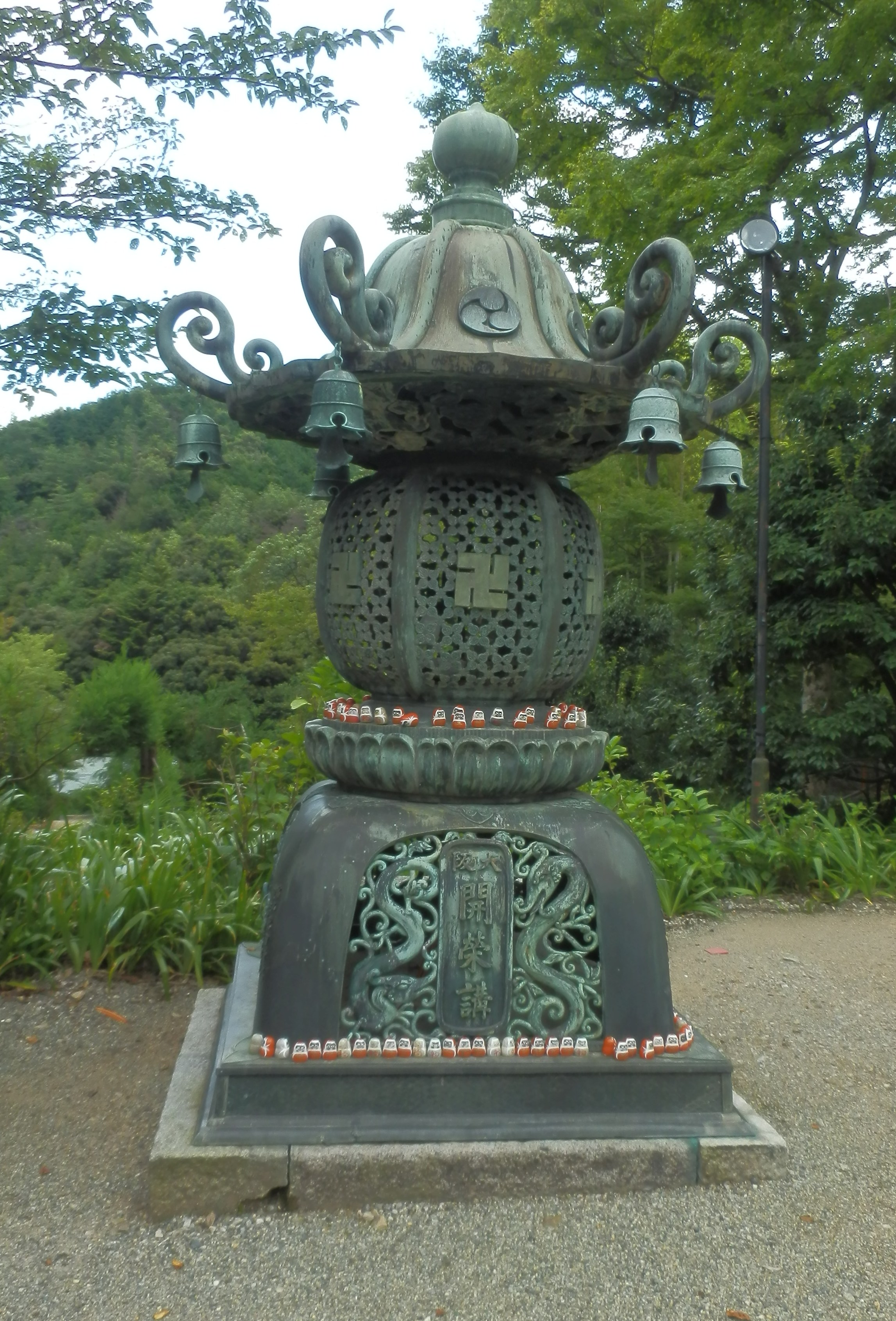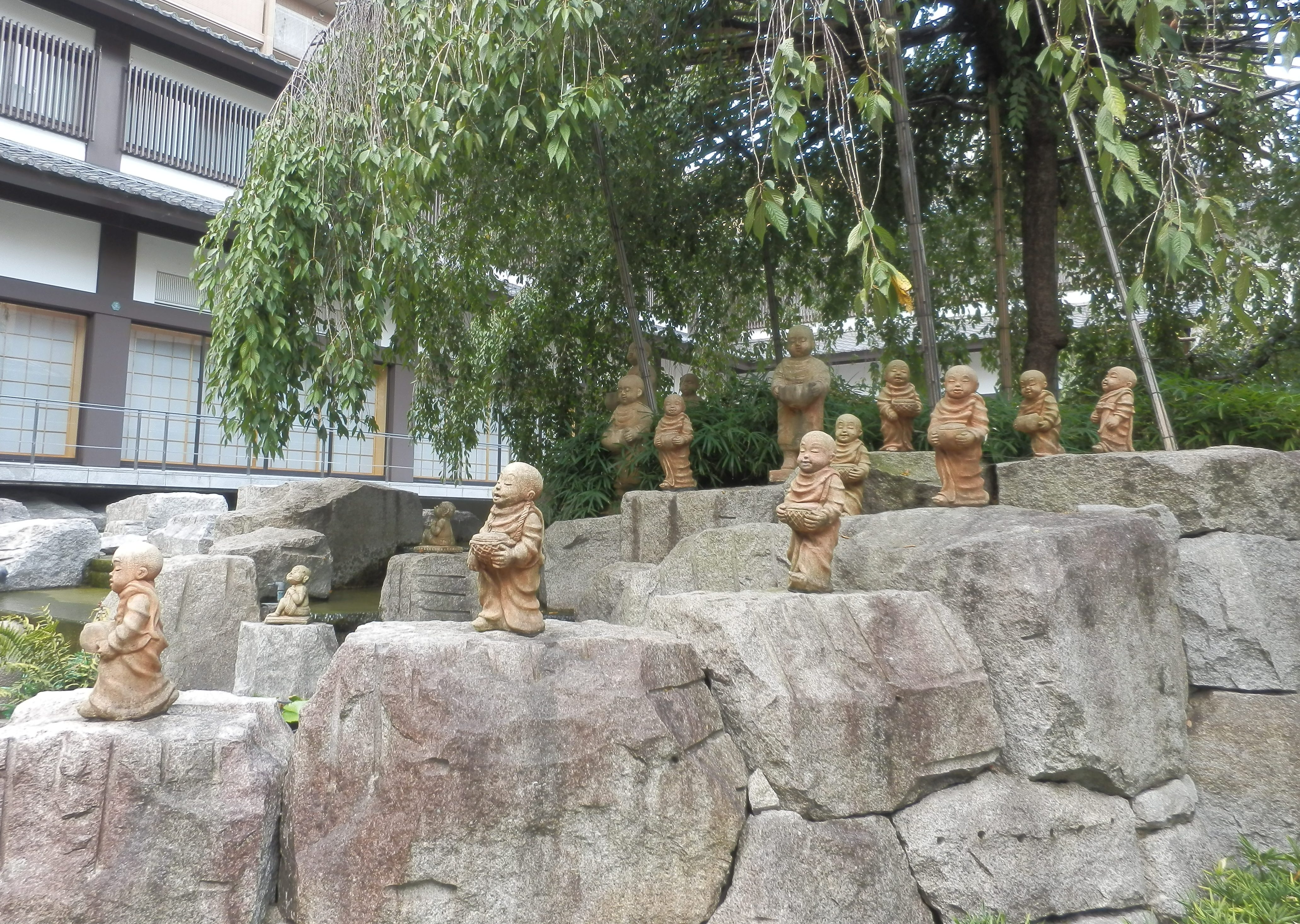Saigoku Kannon Pilgrimage: å‹å°¾å¯º – The Temple of Winner’s Luck
I’ve saved a special temple for January – temple 23 of our 33, the temple dedicated to winning.
「ã™ã¹ã¦ã¯è‡ªåˆ†ã«å‹ã¤ãŸã‚ã«ã€â€Everything you do is to win against yourself.â€
Now spelledå‹å°¾å¯º (win, tail, temple), formerlyå‹çŽ‹å¯º (win, monarch, temple), it is said that the characters were changed when Emperor Seiwa regained his health after the offering of fervent prayers by the priest at Katsuo-ji.
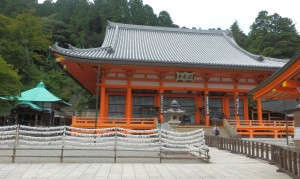 Katsuo-ji is located north of Osaka, in the hills of Minou city, and it can be quite an excursion to get there. There is a helpful chart on the access webpage, and you’ll notice that most of the options end with “taxi ride.†There is a bus from Senri-Chuo, but when I was pilgriming, it ran only thrice a day up the winding slopes of the mountains to deposit pilgrims at the magnificent gate.
Katsuo-ji is located north of Osaka, in the hills of Minou city, and it can be quite an excursion to get there. There is a helpful chart on the access webpage, and you’ll notice that most of the options end with “taxi ride.†There is a bus from Senri-Chuo, but when I was pilgriming, it ran only thrice a day up the winding slopes of the mountains to deposit pilgrims at the magnificent gate.
Katsuo-ji had a modern, wealthy feel to it, well kept and not quite wild. This surprised me, since it felt like I had just ventured deep into the heart of nowhere on that bus ride, and other such temples had a lonely or forgotten air to them.
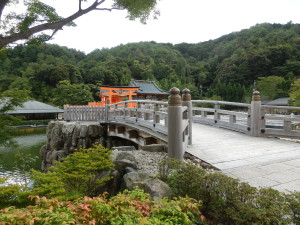 Entrance to Katsuo-ji is 400¥, but the neatly gardened paths hint at the riches of the donations of all the winners who want to keep on winning. After you alight from your bus, you pass through the Niomon gate and over the bridge. Your usual suspects are in attendance – there’s a large pond with a shrine to Benzaiten (that patron deity of all that flows), a Mizuko Kannon (patron of the water babies, those who were never born), a tall pagoda overlooking a pond, a vermillion Hondo, and a founder’s hall. This founder’s temple is different from others we have seen, however, since it takes the form of a mini pilgrimage—and not even of a mini Saigoku 33, but rather the Shikoku 88 temples are represented in the Daishi-do dedicated to Kobo Daishi.
Entrance to Katsuo-ji is 400¥, but the neatly gardened paths hint at the riches of the donations of all the winners who want to keep on winning. After you alight from your bus, you pass through the Niomon gate and over the bridge. Your usual suspects are in attendance – there’s a large pond with a shrine to Benzaiten (that patron deity of all that flows), a Mizuko Kannon (patron of the water babies, those who were never born), a tall pagoda overlooking a pond, a vermillion Hondo, and a founder’s hall. This founder’s temple is different from others we have seen, however, since it takes the form of a mini pilgrimage—and not even of a mini Saigoku 33, but rather the Shikoku 88 temples are represented in the Daishi-do dedicated to Kobo Daishi.
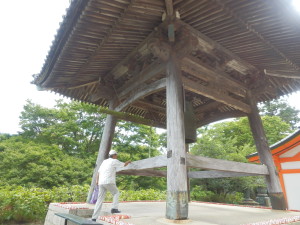 You can ring the bell in the bell tower, and you can walk up to the Yakushido, the oldest building on the grounds, which stood even back when the temple was known as Miroku-ji (dedicated to the Buddha of the future). The Yakushi Nyorai, or medicine Buddha enshrined in the Yakushido was carved by the same man, Kaijo, who dedicated the larger-than-life sandalwood carving of Kannon, here a Juichimen (eleven-faced) Kannon known as Myokan, or miracle-seeing Kannon. Sandalwood had to be imported from tropical climates, and so was very expensive, showing great respect and regard for the temple and Kannon.
You can ring the bell in the bell tower, and you can walk up to the Yakushido, the oldest building on the grounds, which stood even back when the temple was known as Miroku-ji (dedicated to the Buddha of the future). The Yakushi Nyorai, or medicine Buddha enshrined in the Yakushido was carved by the same man, Kaijo, who dedicated the larger-than-life sandalwood carving of Kannon, here a Juichimen (eleven-faced) Kannon known as Myokan, or miracle-seeing Kannon. Sandalwood had to be imported from tropical climates, and so was very expensive, showing great respect and regard for the temple and Kannon.
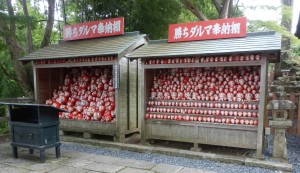 The most striking thing to the average work-a-day pilgrim has got to be the Darumas. You know, those little (or not so little) dolls that always pop back up after you knock them down, onto which you paint one eye when you set a goal, and fill in the other when you achieve it? There is a large area for the dedication of “achievement Daruma†figures of various sizes, because it is customary to return and dedicate the figure with gratitude for a fulfilled wish or achieved goal as you let it go.
The most striking thing to the average work-a-day pilgrim has got to be the Darumas. You know, those little (or not so little) dolls that always pop back up after you knock them down, onto which you paint one eye when you set a goal, and fill in the other when you achieve it? There is a large area for the dedication of “achievement Daruma†figures of various sizes, because it is customary to return and dedicate the figure with gratitude for a fulfilled wish or achieved goal as you let it go. 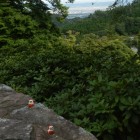 But that’s not the only place you’ll find Daruma at Katsuo-ji. They are everywhere. It’s like an Easter Egg hunt wherein the hider was not even trying.
But that’s not the only place you’ll find Daruma at Katsuo-ji. They are everywhere. It’s like an Easter Egg hunt wherein the hider was not even trying.
Two other features of Katuso-ji stand out in my mind: the Wisdom Walk, and the Pilgrim Path to (or, I suppose, from) Souji-ji, temple number 22. Across the street from the entrance gate, you can see the old pilgrim path 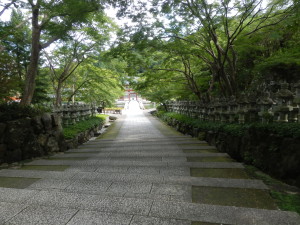 between temples, which leads through the woods and back down the mountainside into town where Souji-ji is located. Stone markers, called choseki, mark this path, and are the oldest of their kind in Japan.
between temples, which leads through the woods and back down the mountainside into town where Souji-ji is located. Stone markers, called choseki, mark this path, and are the oldest of their kind in Japan.
The Wisdom Walk is a little spiral stone path. First you spiral in toward the wisdom stone, then you spiral out, then you sit on the bench and contemplate what you’ve done.
Naturally, Katsuo-ji is a popular New Year’s destination. There is even a purification fire ceremony (saito goma) at the Sanbo Kojin-do (hall of Sanbo Kojin, a syncretic deity who protects the hearth and household from disaster). Sake from special barrels will be doled out before the ringing of the New Year bell. If you need to inject a little winning luck in your life, head into the hills and give Katsuo-ji a try.
Happy New Year!
-Lemmon
For more information about Daruma: http://www.hyogoajet.net/hyogotimes/2011/04/daruma-is-my-homeboy/
Katsuo-ji main page: http://www.katsuo-ji-temple.or.jp/index.html (Japanese, but there is a somewhat limited English link also)
